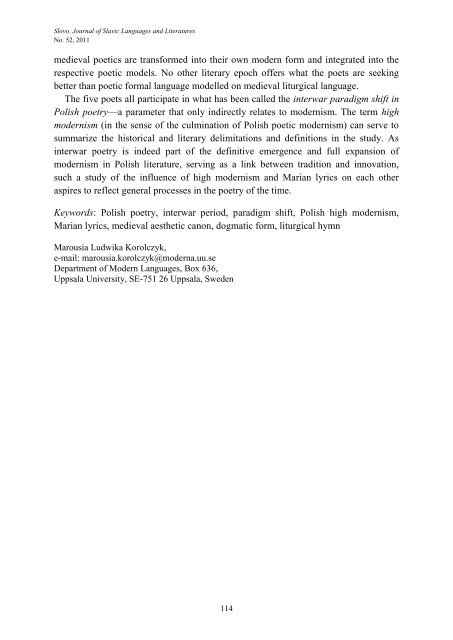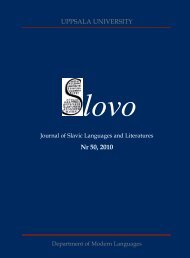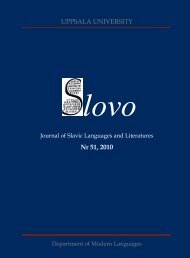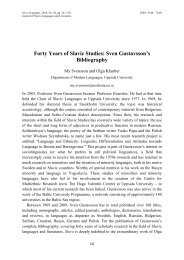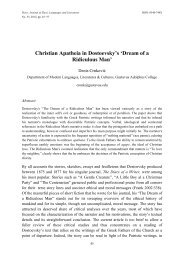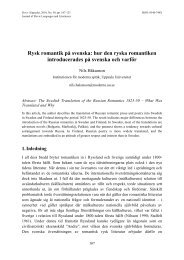Full text PDF - Index of - Uppsala universitet
Full text PDF - Index of - Uppsala universitet
Full text PDF - Index of - Uppsala universitet
Create successful ePaper yourself
Turn your PDF publications into a flip-book with our unique Google optimized e-Paper software.
Slovo. Journal <strong>of</strong> Slavic Languages and Literatures<br />
No. 52, 2011<br />
medieval poetics are transformed into their own modern form and integrated into the<br />
respective poetic models. No other literary epoch <strong>of</strong>fers what the poets are seeking<br />
better than poetic formal language modelled on medieval liturgical language.<br />
The five poets all participate in what has been called the interwar paradigm shift in<br />
Polish poetry—a parameter that only indirectly relates to modernism. The term high<br />
modernism (in the sense <strong>of</strong> the culmination <strong>of</strong> Polish poetic modernism) can serve to<br />
summarize the historical and literary delimitations and definitions in the study. As<br />
interwar poetry is indeed part <strong>of</strong> the definitive emergence and full expansion <strong>of</strong><br />
modernism in Polish literature, serving as a link between tradition and innovation,<br />
such a study <strong>of</strong> the influence <strong>of</strong> high modernism and Marian lyrics on each other<br />
aspires to reflect general processes in the poetry <strong>of</strong> the time.<br />
Keywords: Polish poetry, interwar period, paradigm shift, Polish high modernism,<br />
Marian lyrics, medieval aesthetic canon, dogmatic form, liturgical hymn<br />
Marousia Ludwika Korolczyk,<br />
e-mail: marousia.korolczyk@moderna.uu.se<br />
Department <strong>of</strong> Modern Languages, Box 636,<br />
<strong>Uppsala</strong> University, SE-751 26 <strong>Uppsala</strong>, Sweden<br />
114


